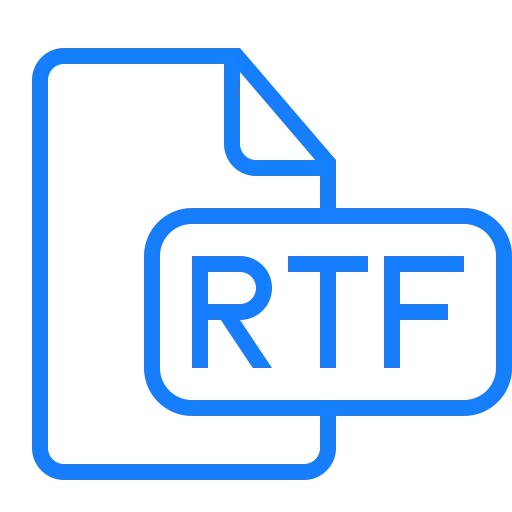
RTF (RICH Text Format) is a text format that is more advanced in comparison with the usual TXT. The purpose of the developers was to create a format convenient for reading documents and e-books. It was achieved thanks to the introduction of support for meta tags. We find out which programs are able to operate with objects with the expansion of RTF.
Processing application format
Working with Rich Text Format Support three groups of applications:- text processors included in a number of office packages;
- Software for reading e-books (the so-called "readers");
- Text editors.
In addition, objects with this expansion are able to open some universal viewers.
Method 1: Microsoft Word
If your Microsoft Office office package is installed on your computer, the RTF contents without problems can be displayed using the Word text processor.
- Run Microsoft Word. Go to the "File" tab.
- After the transition, click on the "Open" icon placed in the left block.
- The standard document opening tool will be launched. In it you will need to go to that folder where the text object is located. Highlight the name and click Open.
- The document is open at Microsoft Word. But, as we see, the launch occurred in compatibility mode (limited functionality). This suggests that not all changes that can produce a wide WORD functionality, the RTF format is able to support. Therefore, in compatibility mode, such unsupported features are simply disconnected.
- If you want to just read the document, and not edit, then in this case it will be appropriate to go to read mode. Move to the "View" tab, and then click on the Libery in the "Document View Modes" block with the "Read Mode" button.
- After moving to the read mode, the document will open up the entire screen, and the program's work area will be divided into two pages. In addition, all unnecessary tools will be removed from the panels. That is, the Word interface will appear in the most convenient form for reading e-books or documents.
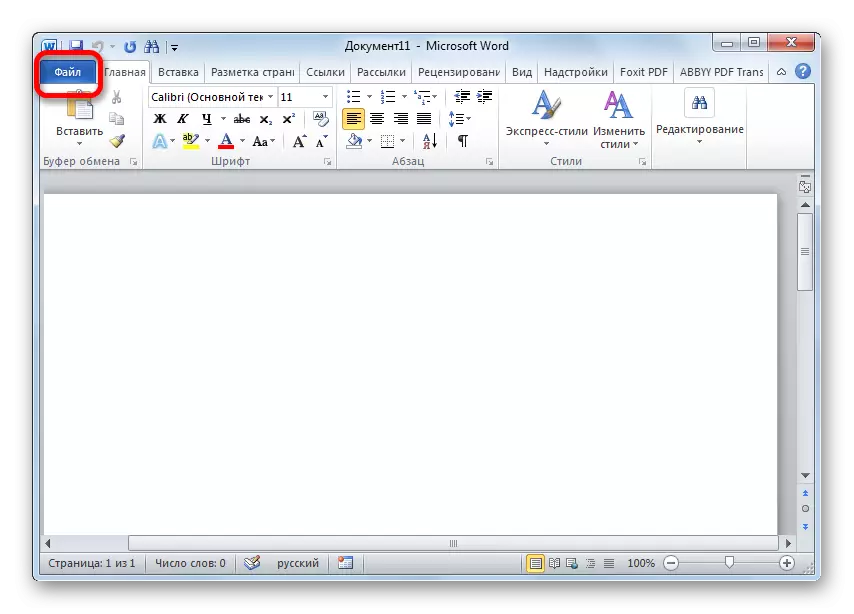
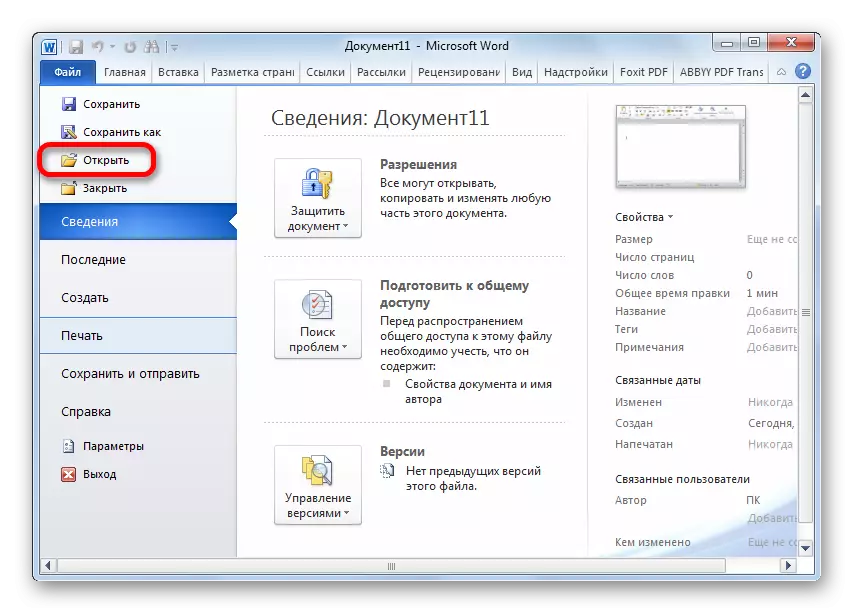
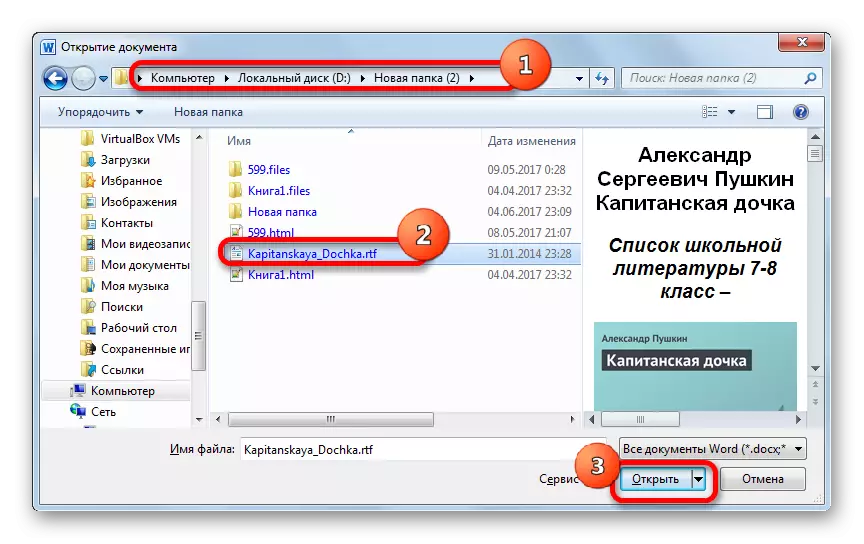

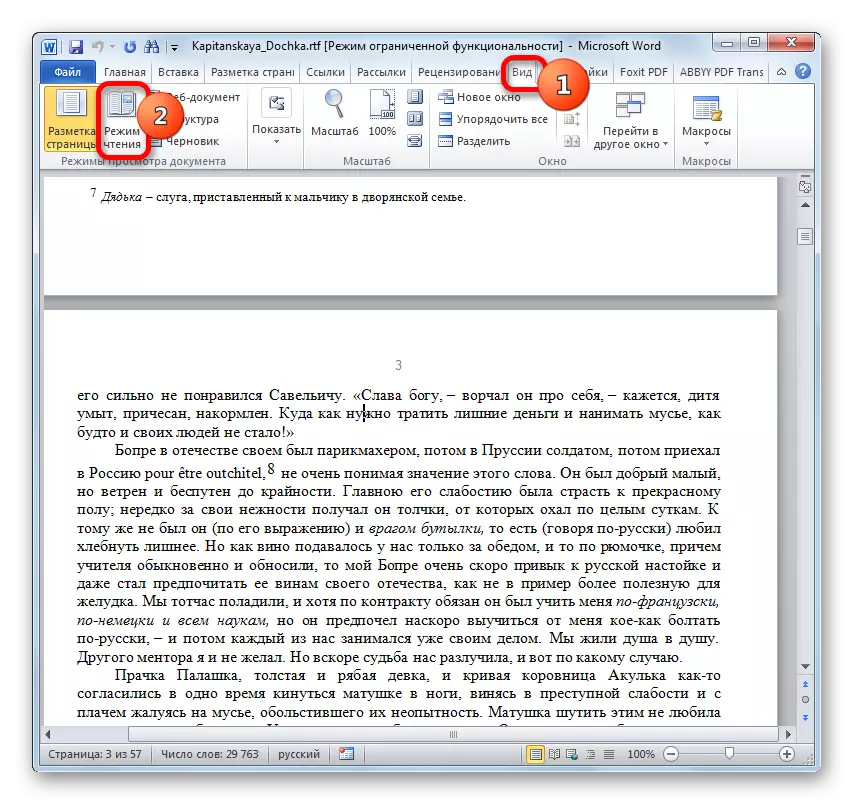
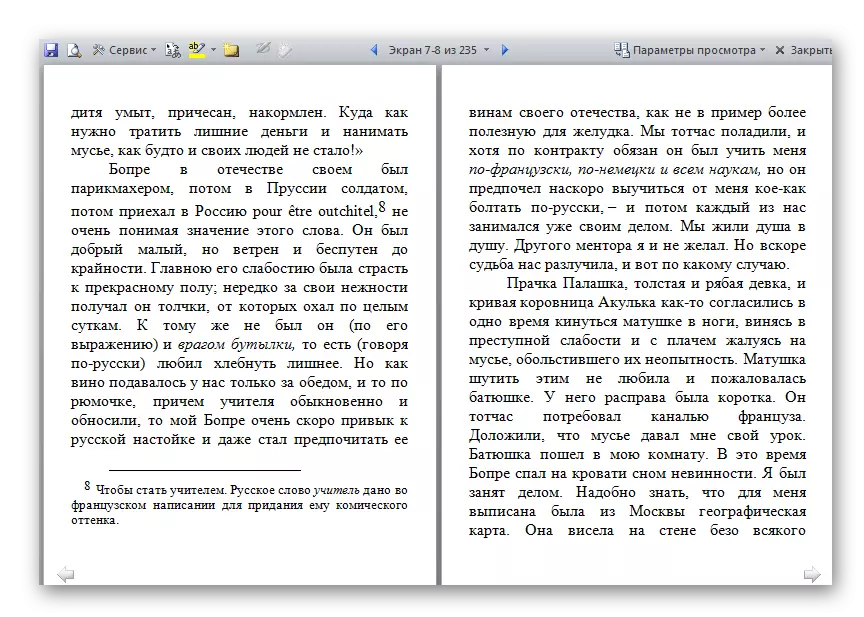
In general, Word works very correctly with RTF format, correctly displaying all objects to which meta tags are applied in the document. But this is not surprising, since the developer of the program and this format is the same - Microsoft. As for the restriction on editing the RTF documents in the Word, it is rather the problem of the format itself, not the program, since it simply does not support some advanced features that, for example, are used in DOCX format. The main disadvantage of Word is that the specified text editor is part of the Paid Microsoft Office office.
Method 2: LibreOffice Writer
The next text processor that can work with RTF is Writer, which is included in the free package of LibreOffice office applications.
- Run the LibreOffice startup window. After that there are several options for action. The first one includes the click on the "Open File".
- In the window, go to the Text Object Placement folder, highlight it and click the "Open" below.
- The text will be displayed using LibreOffice Writer. Now you can go to read mode in this program. To do this, click on the "Book View" icon, which is posted on the status bar.
- The application will go to the book type display of the contents of a text document.
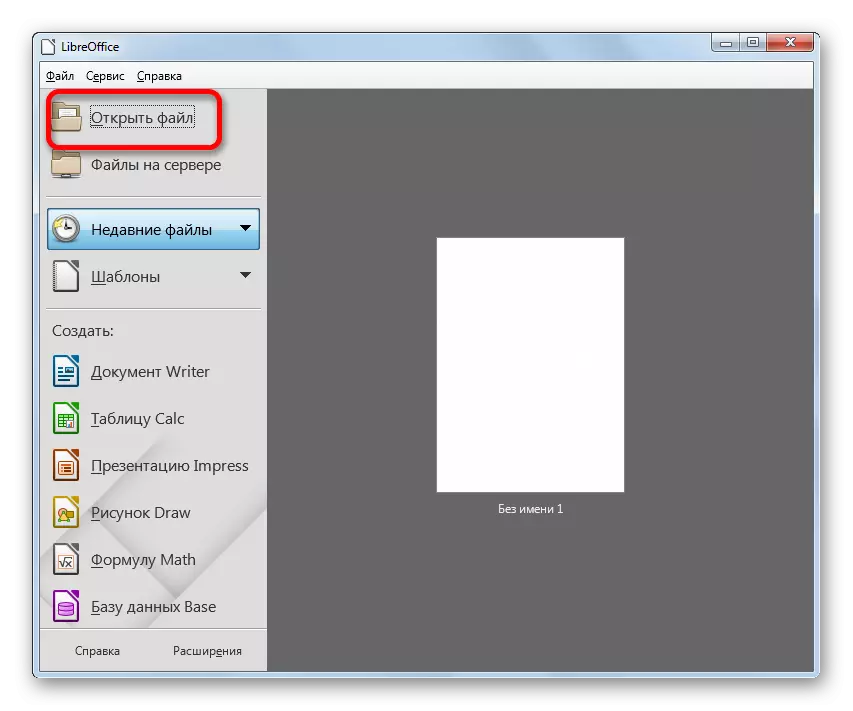
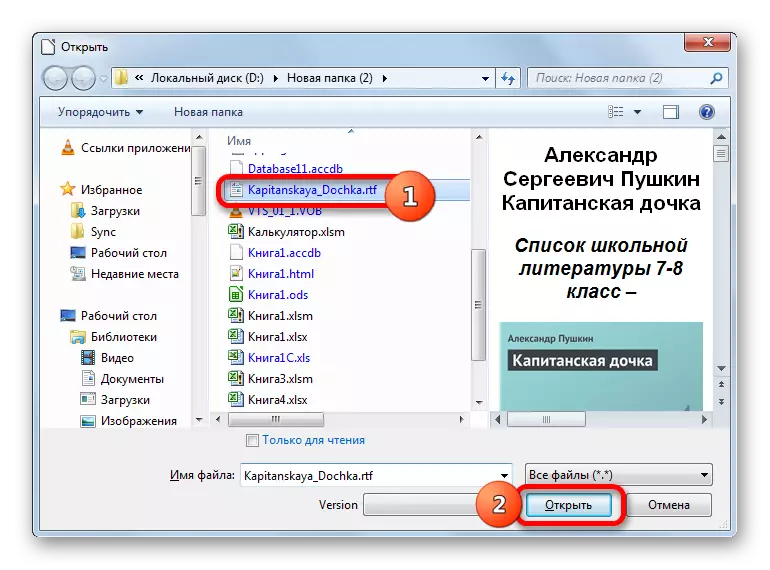
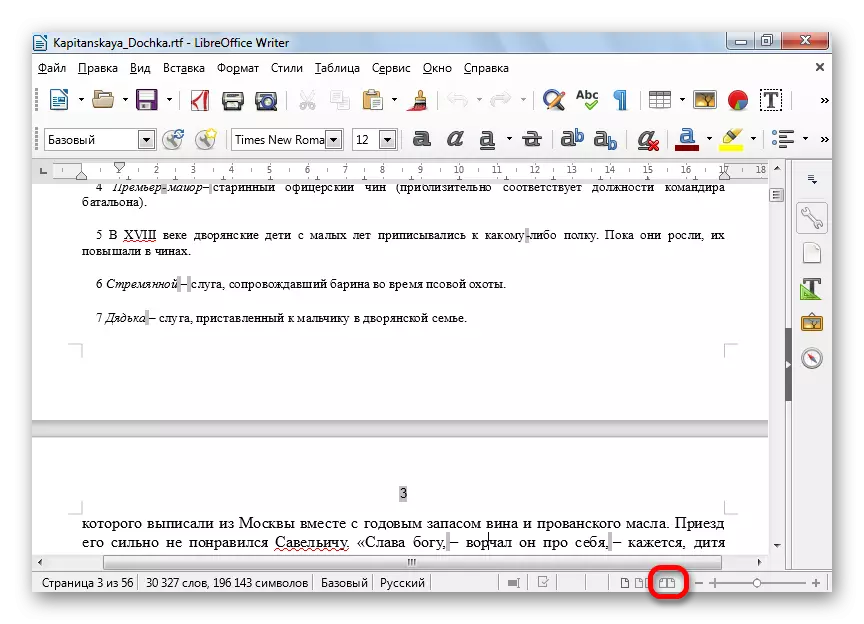
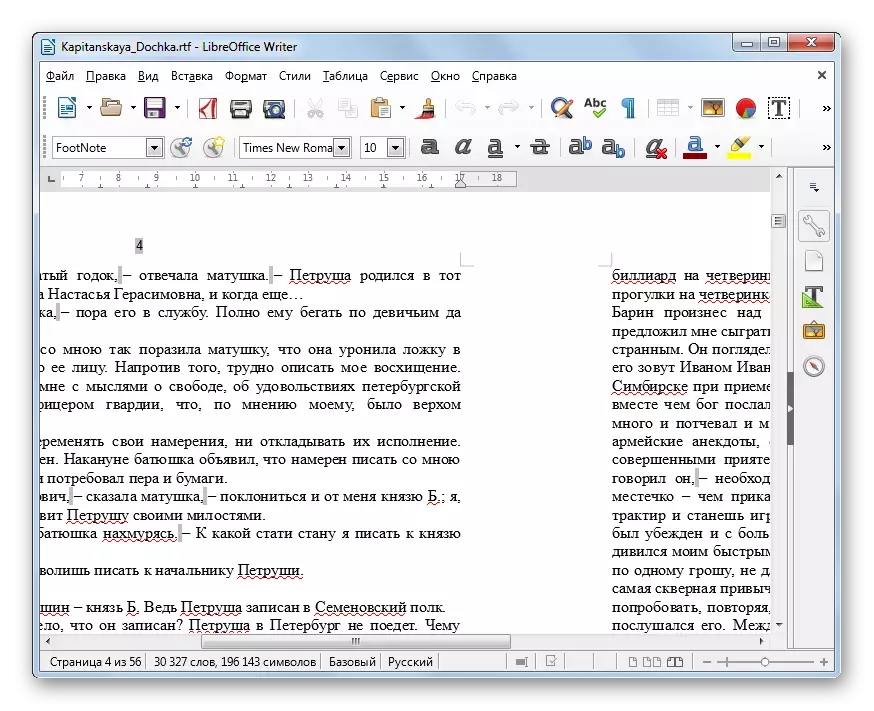
There is an alternative to launch a text document in the LibreOffice startup.
- In the menu, click on the "File" inscription. Next click "Open ...".

Fans of using hot keys can be pressed Ctrl + O.
- The launch window opens. All further actions, according to the scenario described above.
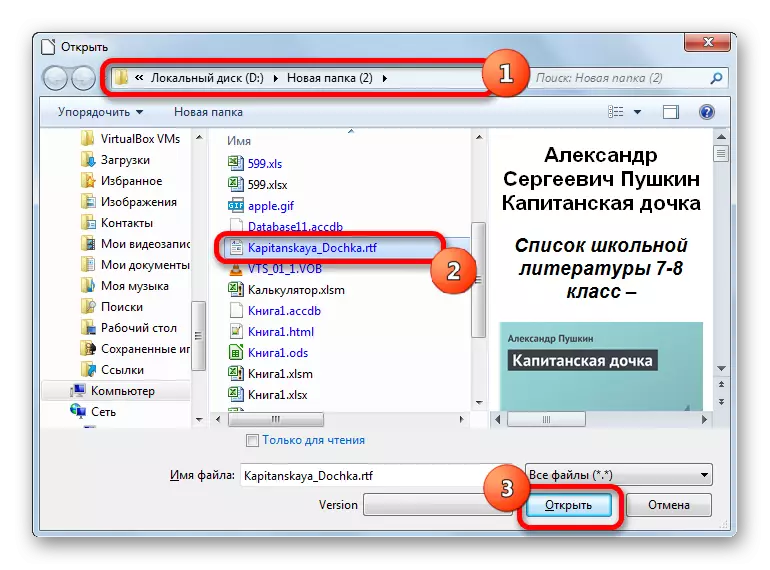
To implement another option to open the object, it is enough to move to the final directory in the explorer, select the text file itself and drag it, clamping the left mouse button into the LibreOffice window. The document will be displayed in Writer.

There are also options for opening text not through the LibreOffice starter window, but through the interface of the Writer application itself.
- Click on the "File" inscription, and then in the "Open ..." list.
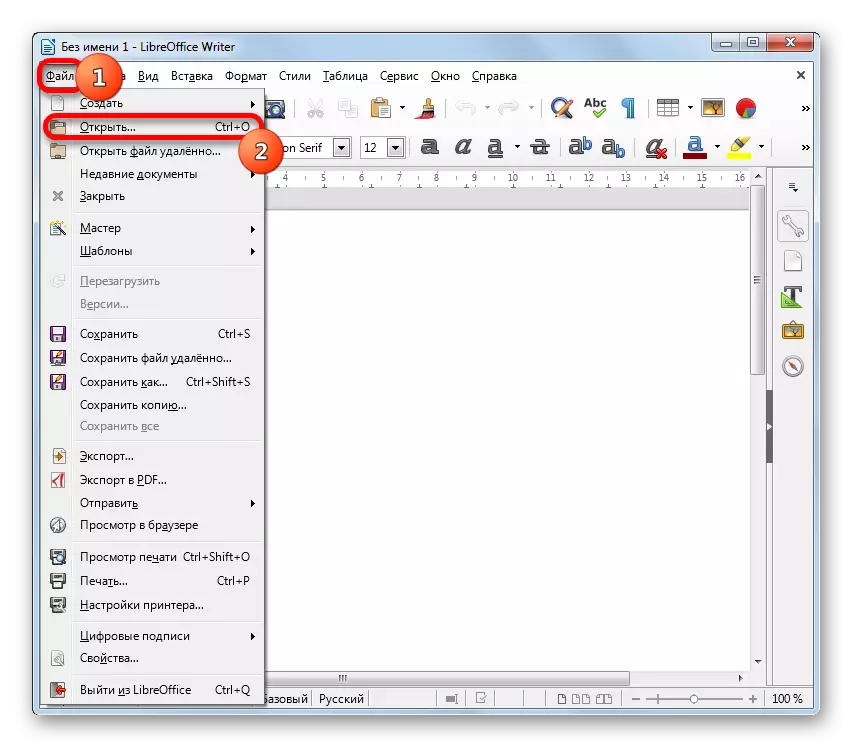
Or click on the "Open" icon in the folder on the toolbar.
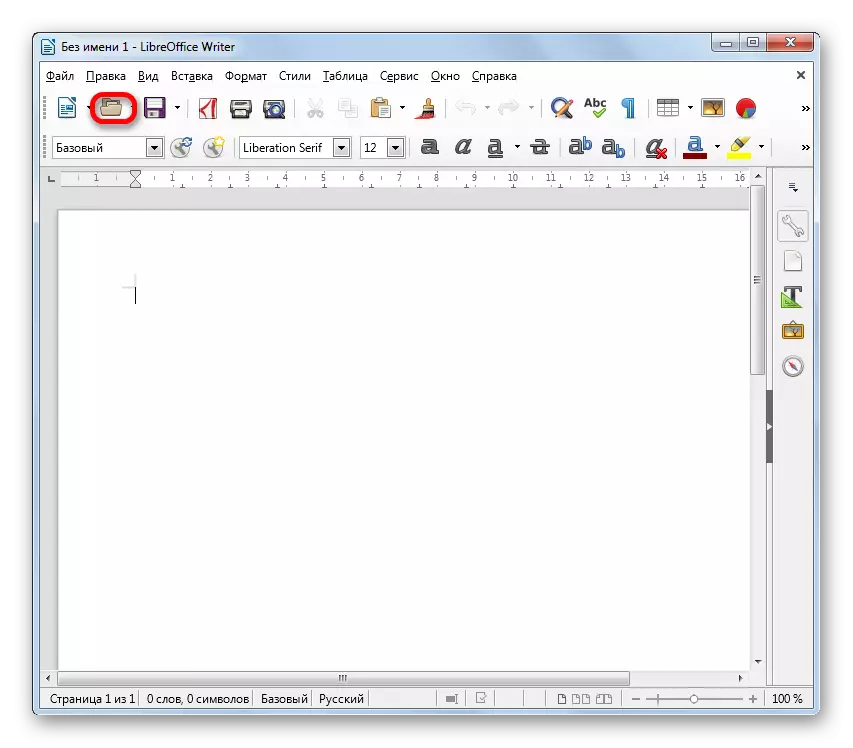
Or apply Ctrl + O.
- The opening window will start, where we have already described above.
As you can see, LibreOffice Writer provides more options for opening text than Word. But, at the same time, it should be noted that when displaying the text of this format in LibreOffice, some spaces are marked with gray, which can interfere with reading. In addition, the Libre book type is inferior to the convenience of the Vordvian reading mode. In particular, unnecessary tools are not removed in the "Book View" mode. But the unconditional advantage of the Writer application is that they can be used absolutely free, unlike Microsoft Office.
Method 3: OpenOffice Writer
Another free alternative Word when opening RTF is the application of the OpenOffice Writer application, which is included in another free office software package - Apache OpenOffice.
- After starting the starting window OpenOffice, make a click on "open ...".
- In the opening window, as in the methods under consideration, go to the directory of placement of a text object, mark it and click "Open".
- The document is displayed via OpenOffice Writer. To go to the book mode, click on the corresponding status string icon.
- Book mode viewing document included.
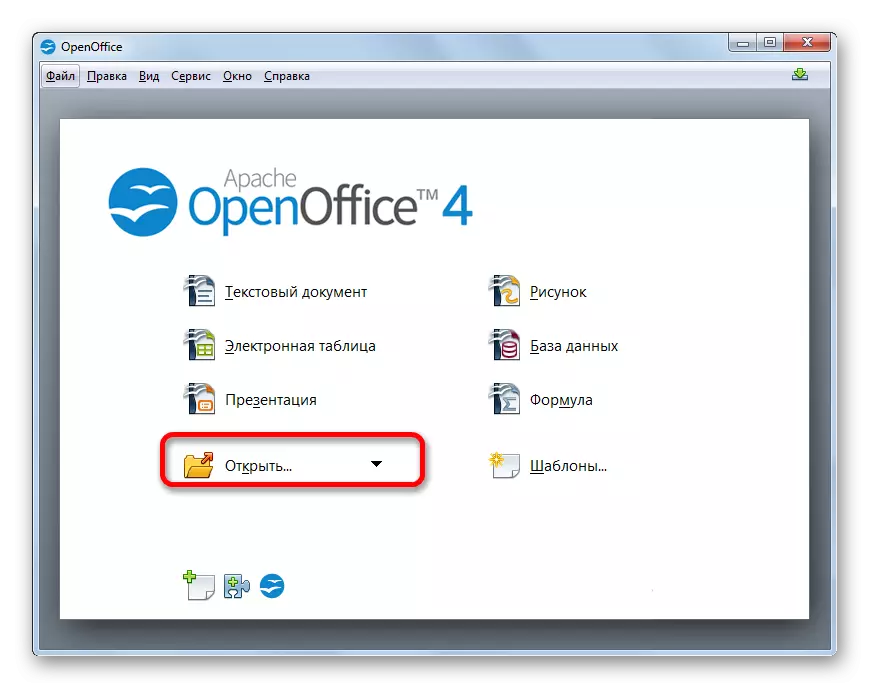
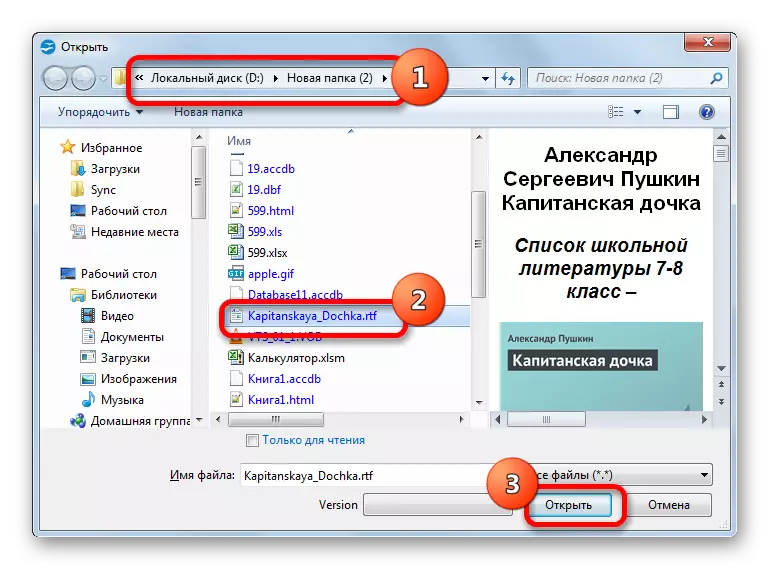

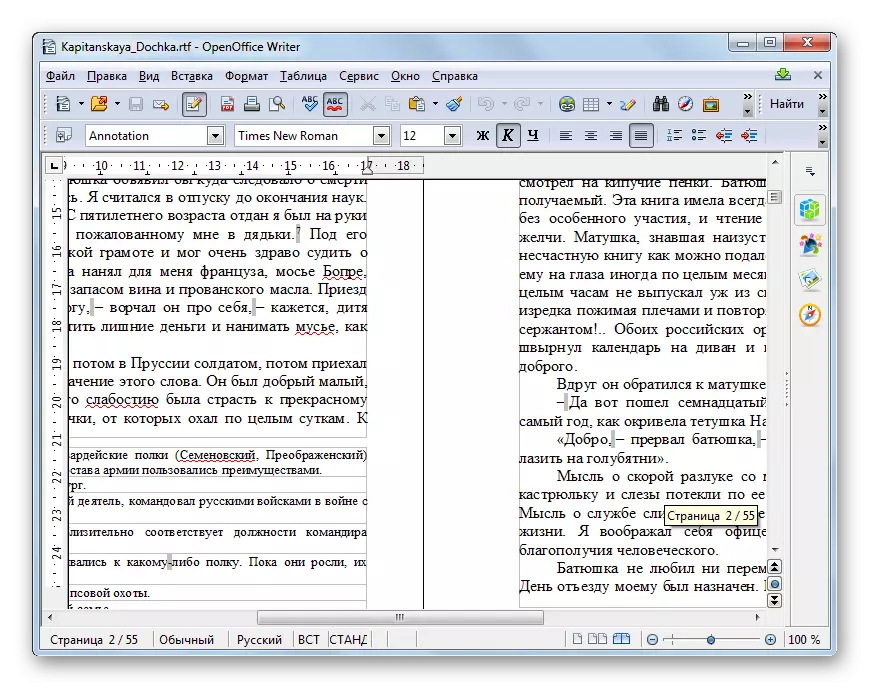
There is a startup option from the starting window of the OpenOffice package.
- Running the starting window, click "File". After that, press "open ...".
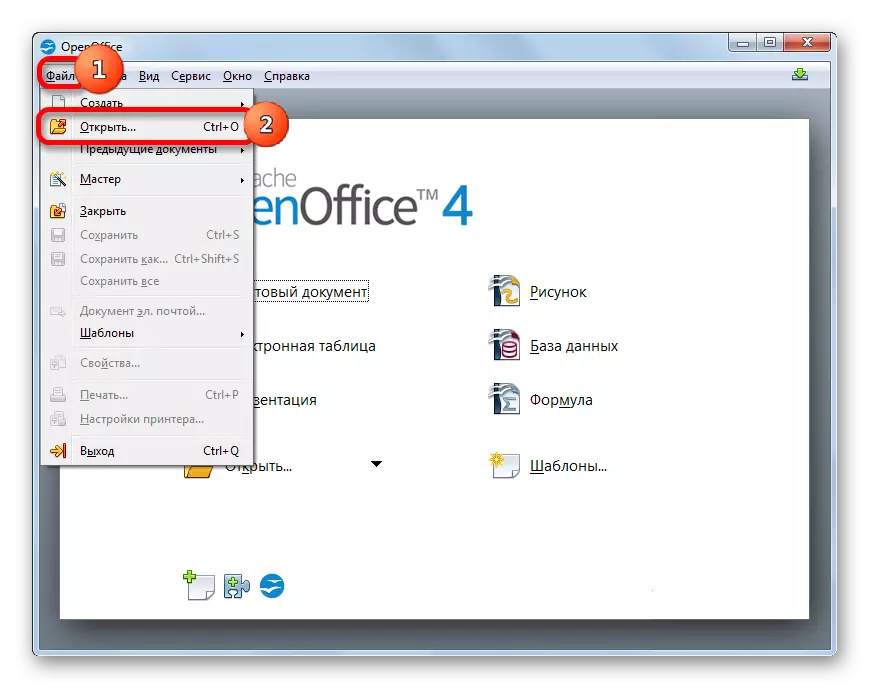
You can also use Ctrl + O.
- When using any of the above options, the opening window will start, after which you spend all further manipulations, according to the instructions in the previous embodiment.
There is also the ability to run a document dragging from the conductor to the OpenOffice startup window in the same way as for LibreOffice.
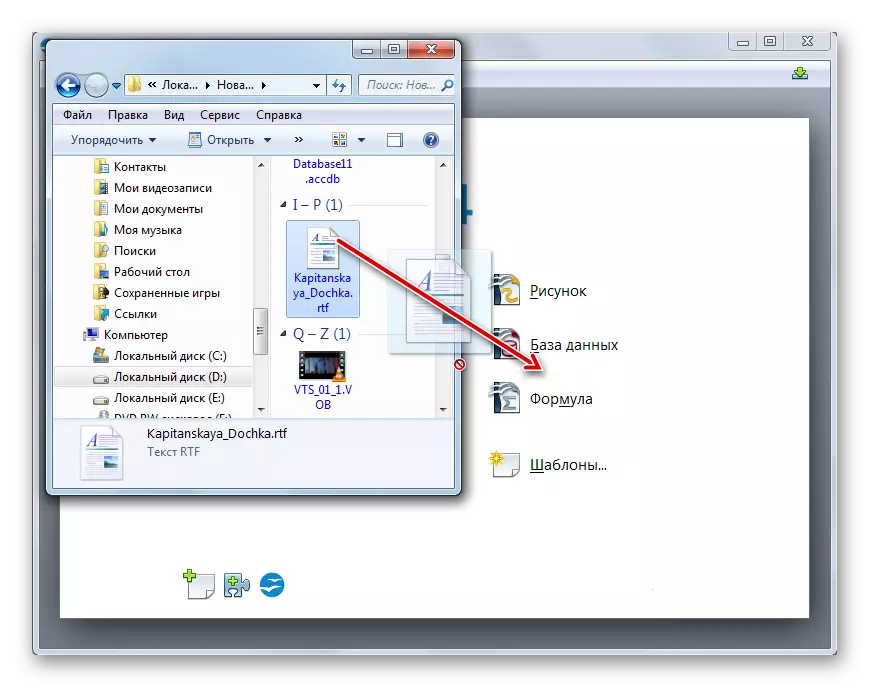
The opening procedure is also carried out through the Writer interface.
- Running OpenOffice Writer, click File in the menu. In the list that opens, select "Open ...".
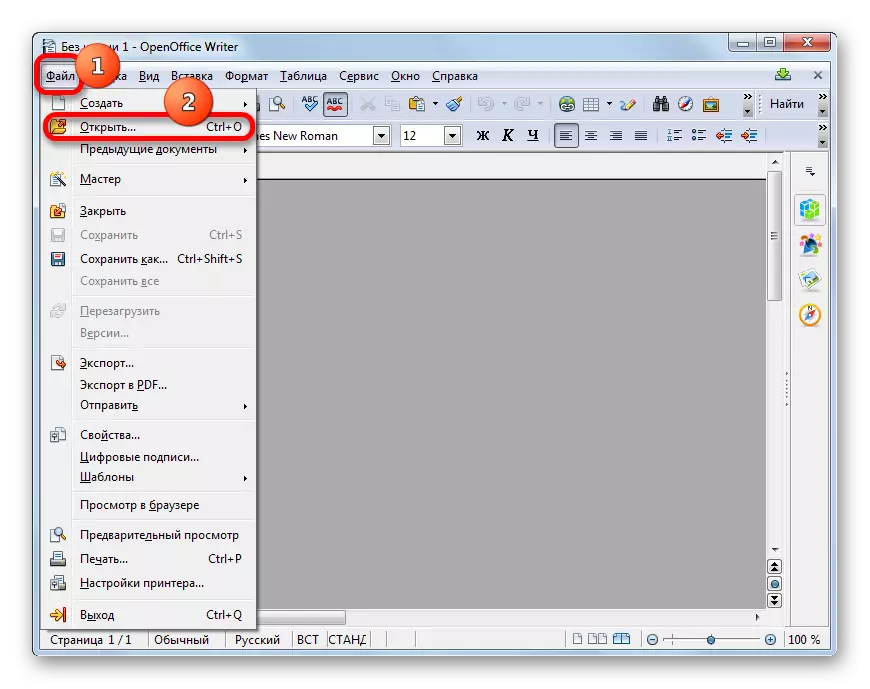
You can click on the "Open ..." icon on the toolbar. It is presented as a folder.
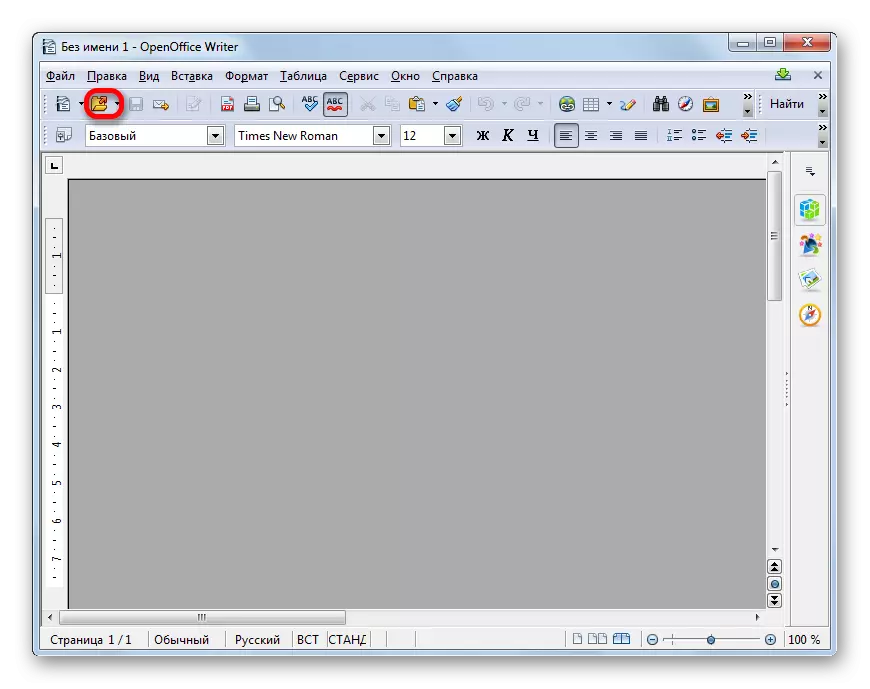
You can use as an alternative to Ctrl + O.
- A transition to the opening window will be performed, after which all actions must be performed in the same way as described in the first embodiment of a text object in OpenOffice Writer.
Actually, all the advantages and disadvantages of the OpenOffice Writer when working with RTF are the same as the LibreOffice Writer: the program is inferior in visual display of the WORD content, but at the same time is, in contrast to it, free. In general, the LibreOffice office package is currently more modern and advanced than its main competitor among free analogues - Apache OpenOffice.
Method 4: WordPad
Some ordinary text editors that differ from the textual processors described above less developed functionality are also supported by the RTF, but not all. For example, if you try to run the contents of the document in the Windows notepad, then instead of a pleasant reading, get text alternating by meta tags, whose task is to display formatting items. But you will not see the format itself, since the notepad does not support it.
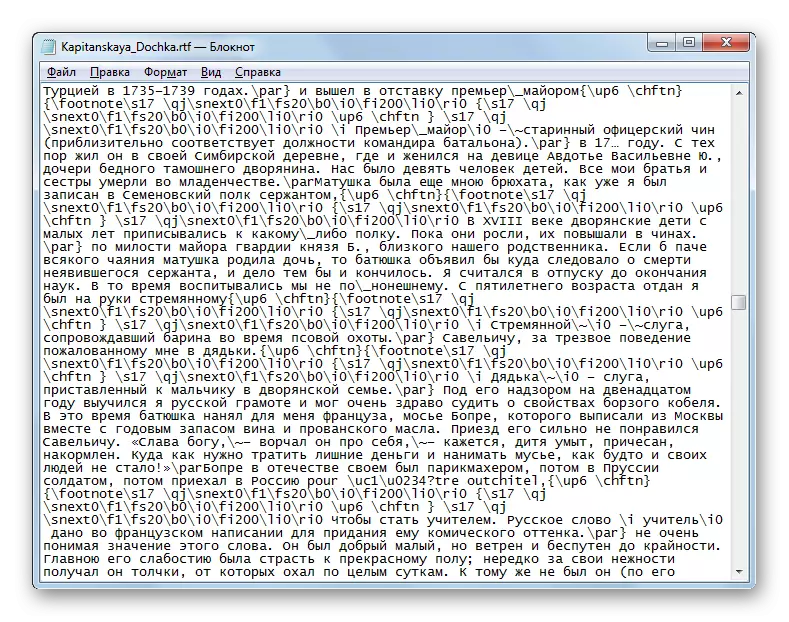
But in Windows, there is a built-in text editor that successfully copes with the display of information in the RTF format. It is called WordPad. Moreover, the RTF format is the main format, since by default the program saves files with this expansion. Let's see how you can display the text of the specified format in the standard Windows WordPad program.
- The easiest way to start the document in WordPad is twice, click by the name in the left mouse button.
- Content will open via WordPad interface.
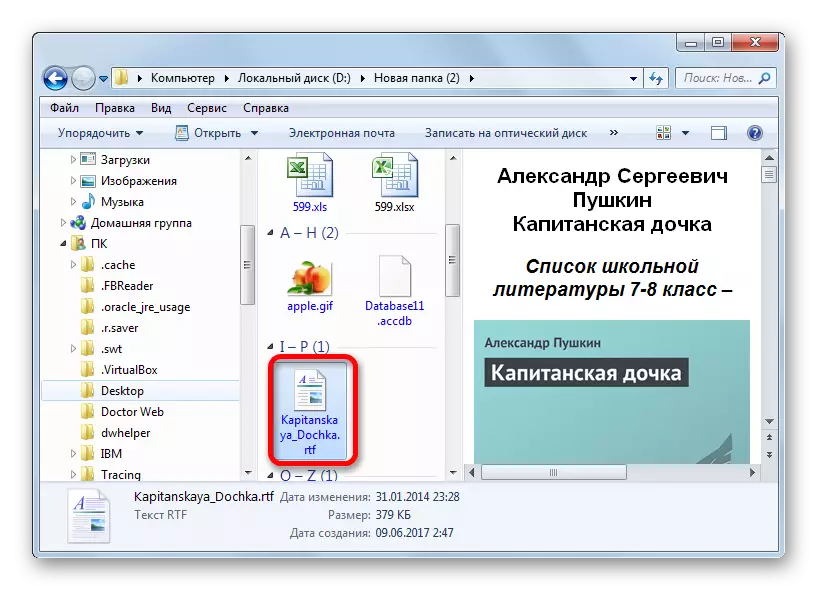
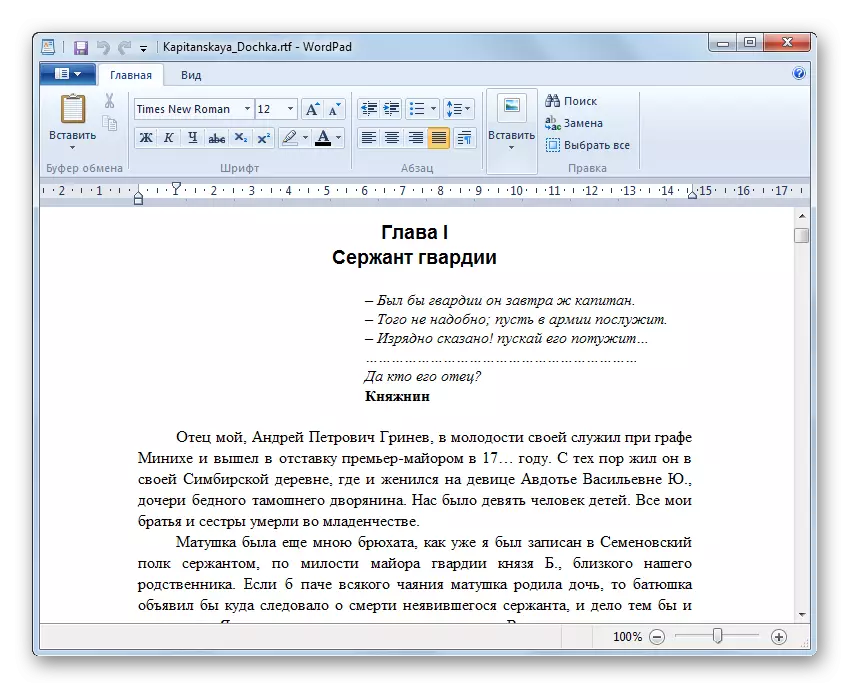
The fact is that in the WordPad WordPad registry is registered as the default software to open this format. Therefore, if the adjustments in the system settings were not introduced, the text specified by the text will open in WordPad. If the changes were made, the document will start using that software that is assigned by default for opening it.
It is possible to start the RTF also from the WordPad interface.
- To start WordPad, click on the "Start" button at the bottom of the screen. In the menu that opens, select the lowest item - "All Programs".
- In the list of applications, find the "Standard" folder and click on it.
- From the discontinued standard applications, select the name "WordPad".
- After WordPad is running, click on the pictogram in the form of a triangle, which is lowered the angle down. This icon is located on the left of the "Home" tab.
- A list of actions will appear where to select "Open".

As an option, you can press Ctrl + O.
- After activating the opening window, go to the folder where the text document is located, check it and click Open.
- The contents of the document will be displayed via WordPad.
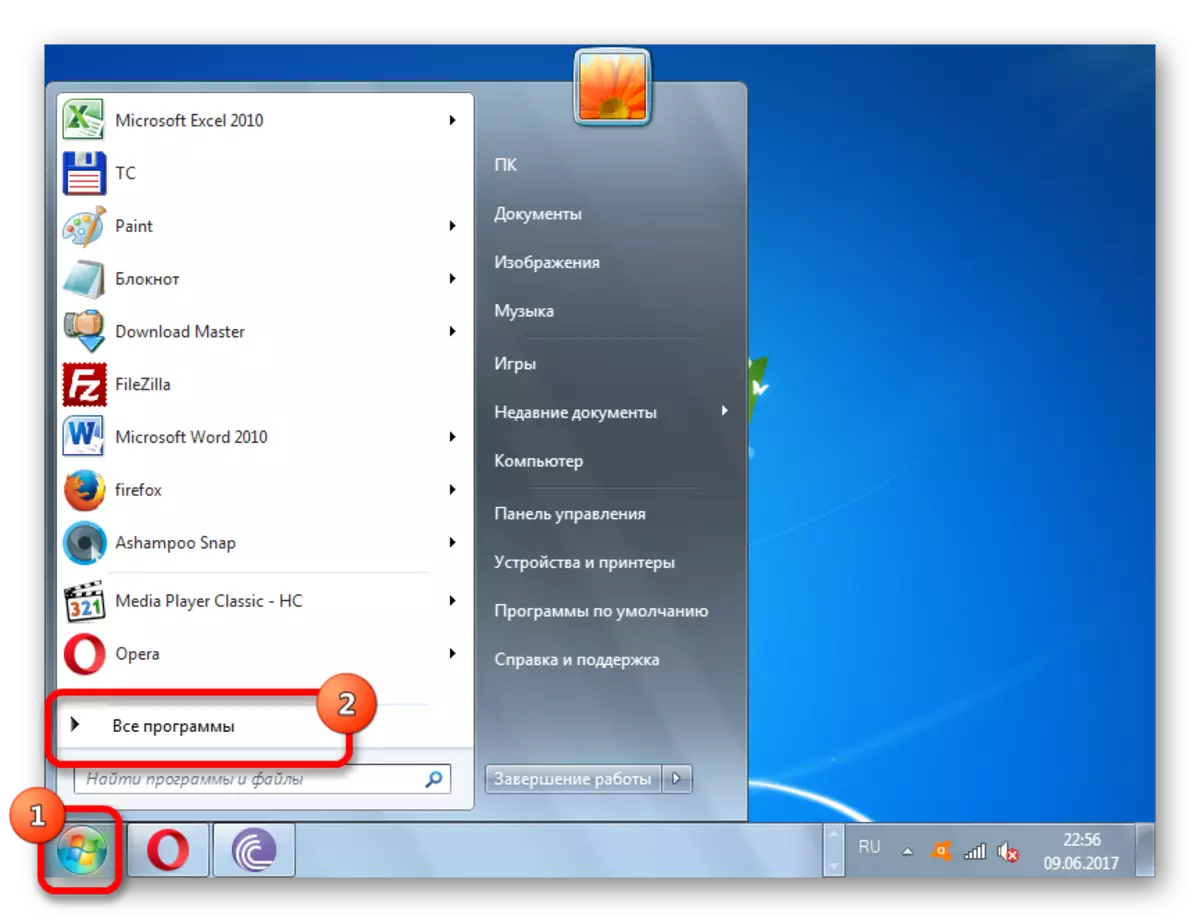


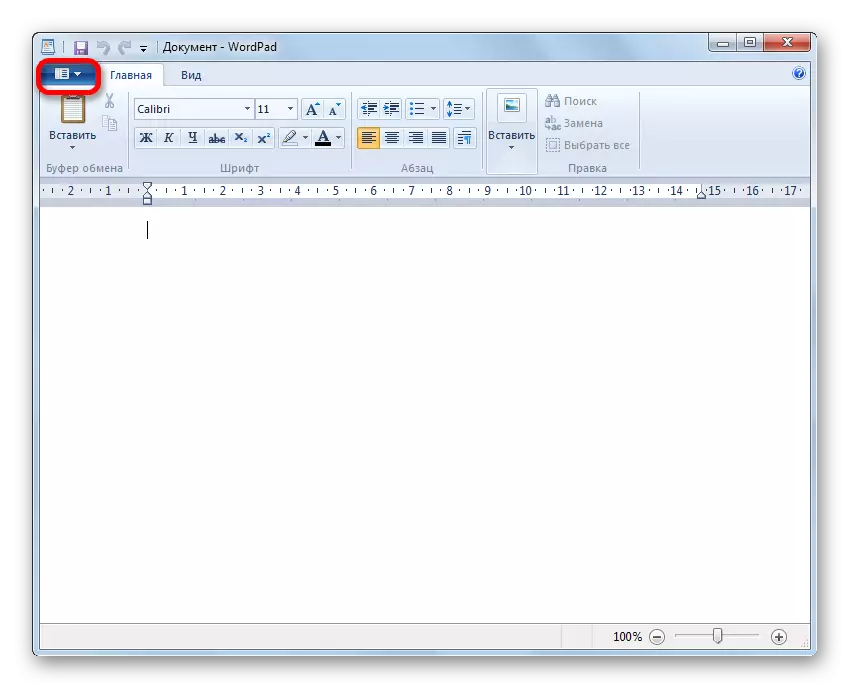
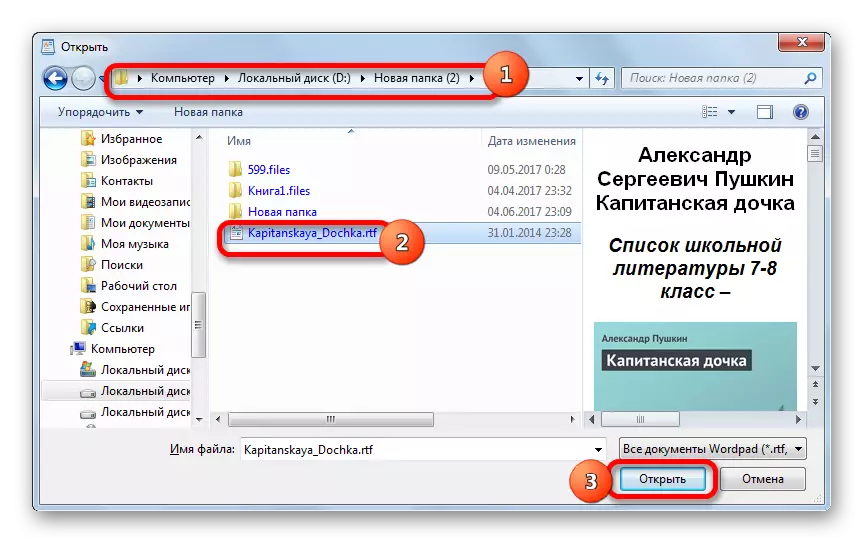
Of course, the possibilities of displaying the contents of WordPad significantly inferior to all text processors that were listed above:
- This program, unlike them, does not support work with images that can be mounted in a document;
- She does not break the text on the pages, and represents it a solid tape;
- The application does not have a separate reading mode.
But at the same time, WordPad has one important advantage over the above programs: it does not need to be installed, as it enters the basic version of Windows. Another advantage is that, in contrast to previous programs, in order to start the RTF in WordPad, it is enough to simply click on the object in the explorer.
Method 5: CoolReader
Open RTF can not only text processors and editors, but also readers, that is, software designed solely for reading, and not to edit text. One of the most demanded programs of this class is CoolReader.
- Make the CoolReader launch. On the menu, click on the "File" item, represented by an icon in the form of a drop-down book.

You can also click on the right mouse button along any field of the program window and select "Open a new file" from the context list.
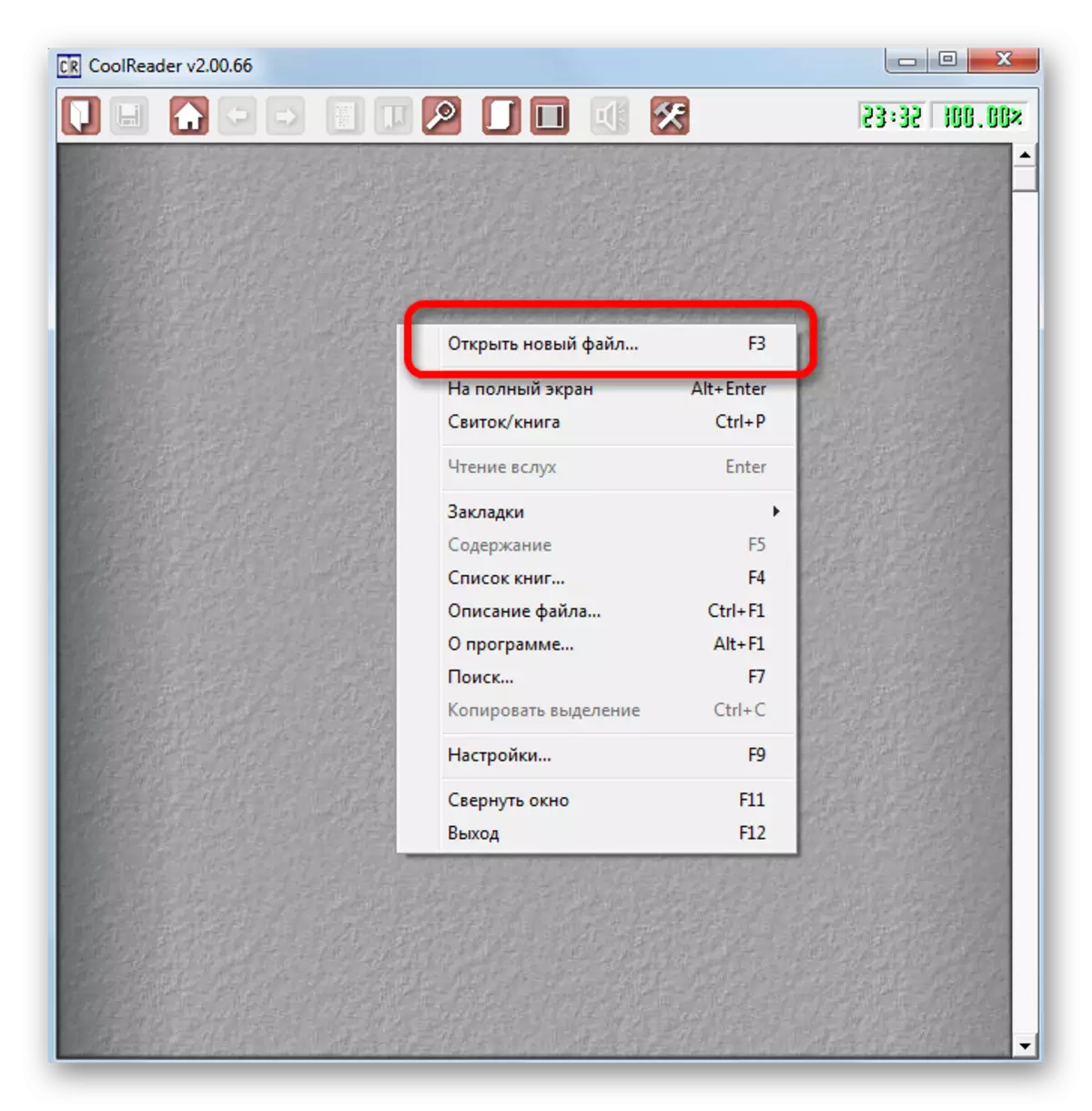
In addition, you can start the opening window with hot keys. Moreover, there are two options at once: the use of conventional scenario for such purposes Ctrl + O, as well as pressing the F3 function key.
- The opening window is launched. Go to it to the folder where the text document is placed, make it allocation and click Open.
- A text launch in the CoolReader window will be executed.
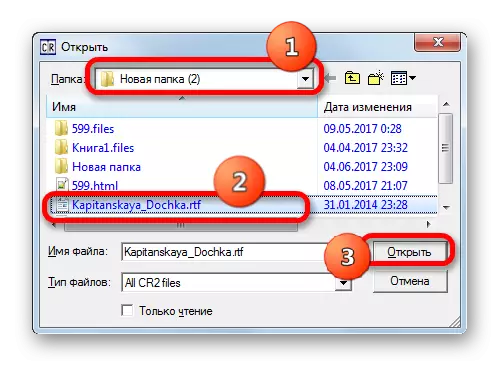
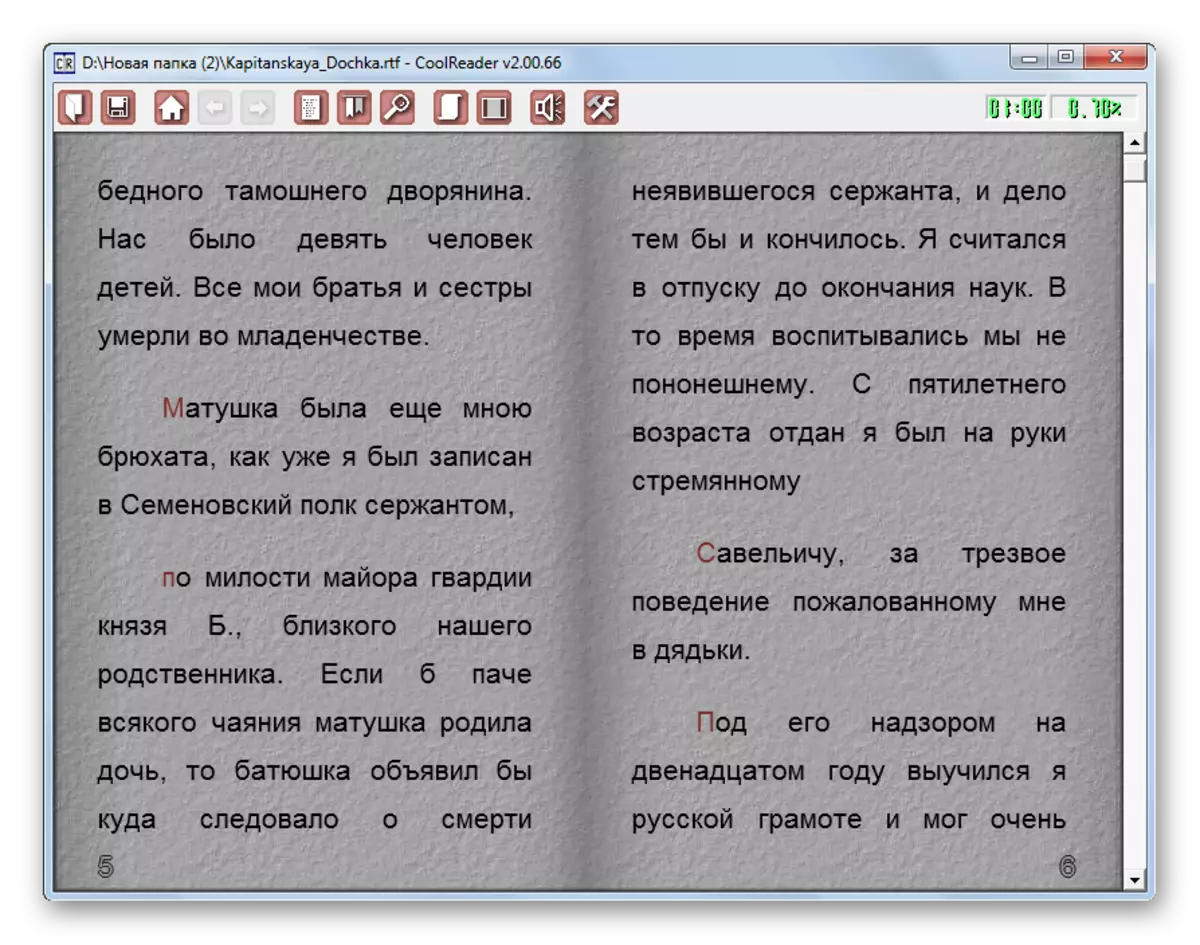
In general, CoolReader rather correctly displays the formatting of the contents of RTF. The interface of this application is more convenient for reading than text processors and, moreover, text editors described above. At the same time, in contrast to previous programs, CoolReader cannot be edited text.
Method 6: AlReader
Another reader supporting the RTF - AlReader.
- Running the application, click "File". From the list, select "Open File".
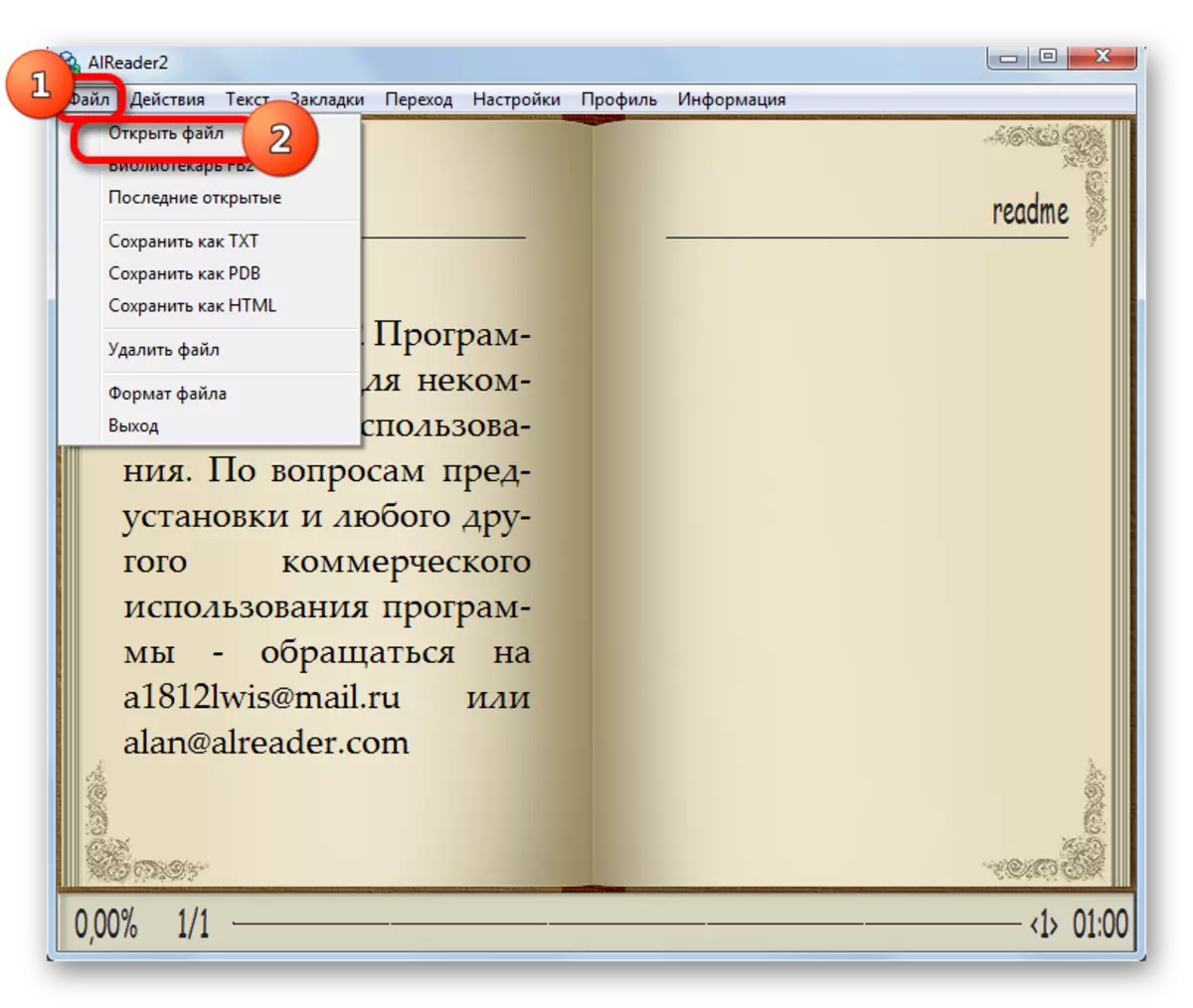
You can also click on any area in the AlReader window and in the context list, click on "Open File".
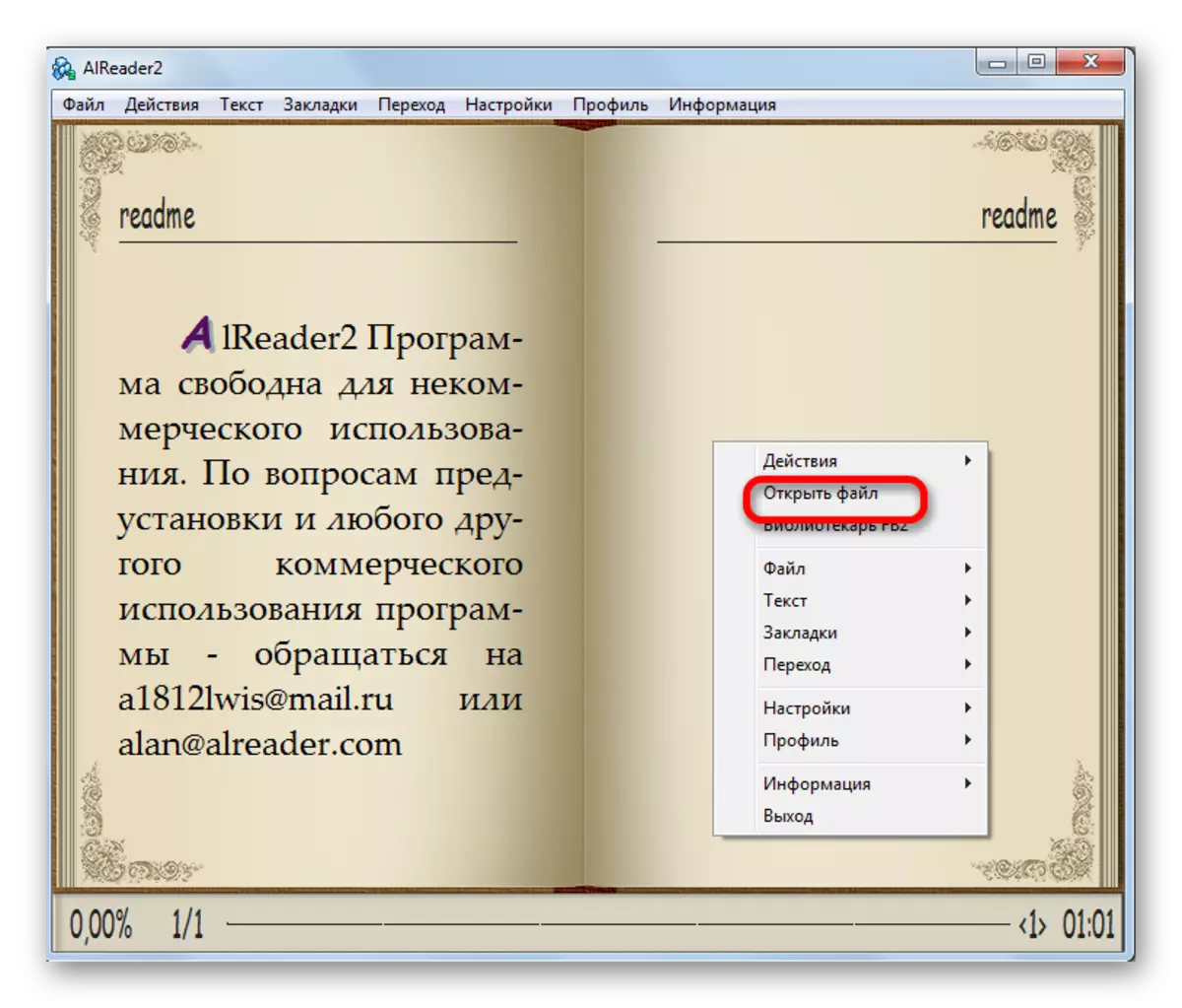
But the usual Ctrl + O in this case does not work.
- The opening window is launched, which is highly different from the standard interface. In this window, go to the folder where the text object is placed, check it and click "Open".
- The content of the document opens in AlReader.
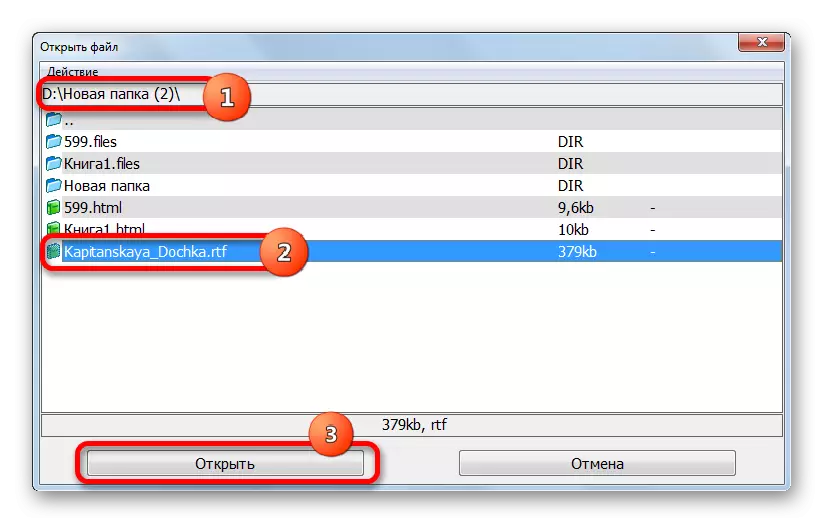

The display of the contents of RTF in this program is not much different from the possibilities of CoolReader, so that specifically in this aspect the choice is a matter of taste. But in general, AlReader supports more formats and has a more extensive toolkit than CoolReader.
Method 7: Ice Book Reader
The following reader supporting the described format is Ice Book Reader. True, it is more sharpened for creating a library of e-books. Therefore, the opening of objects in it is fundamentally different from all previous applications. You can not start directly file. It will first need to import an Ice Book Reader to the internal library, and after that it will be discovered.
- Activate Ice Book Reader. Click the Library icon, which is represented by the folder form on the top horizontal panel.
- After starting the library window, click File. Select "Import text from file".
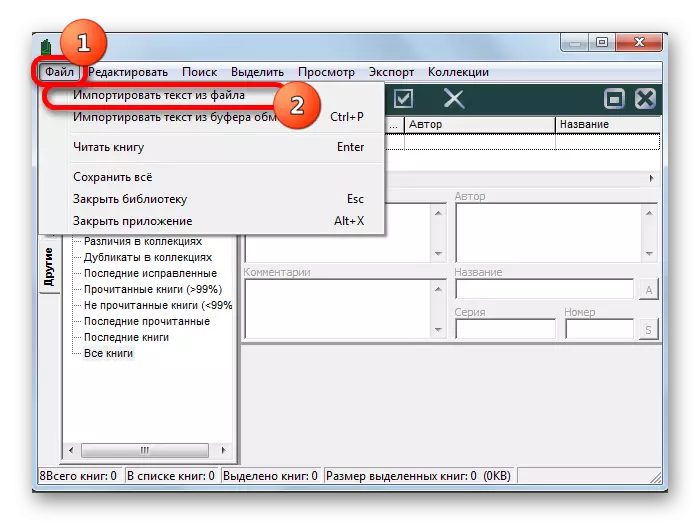
Other option: In the Library window, click on the "Import text from the File" icon in the form of a plus icon.
- In the running window, go to the folder where the text document you want to import are located. Make it allocation and click "OK".
- The content will be imported into the Ice Book Reader library. As you can see, the name of the target text object is added to the library list. To start reading this book, click double clicking on the name of this object in the library window or press ENTER after it is selected.
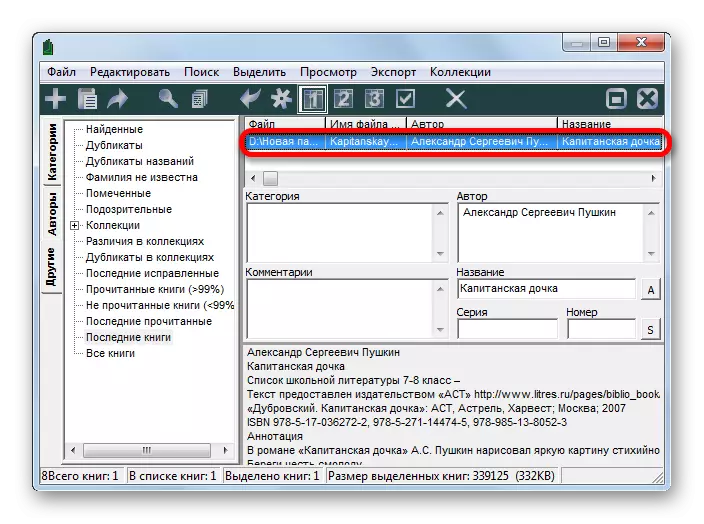
You can also select this object, click "File" and then select "Read the Book".
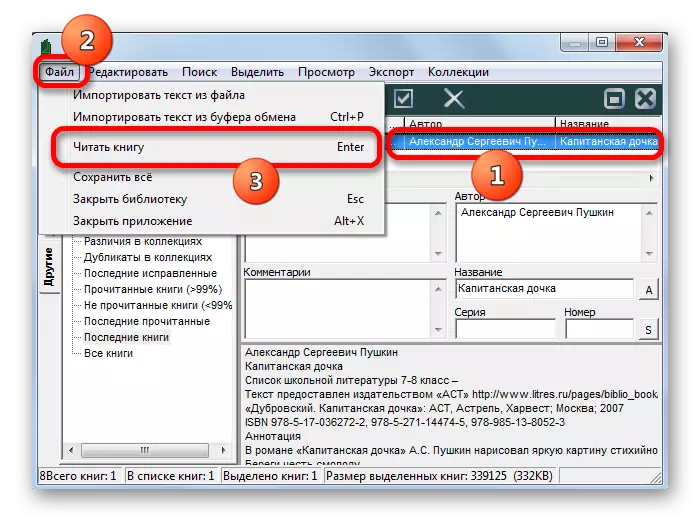
Another option: After selecting a book name in the Library window, click the "Read Book" icon in the form of an arrow on the toolbar.
- With any of the listed actions, the text will be displayed in Ice Book Reader.

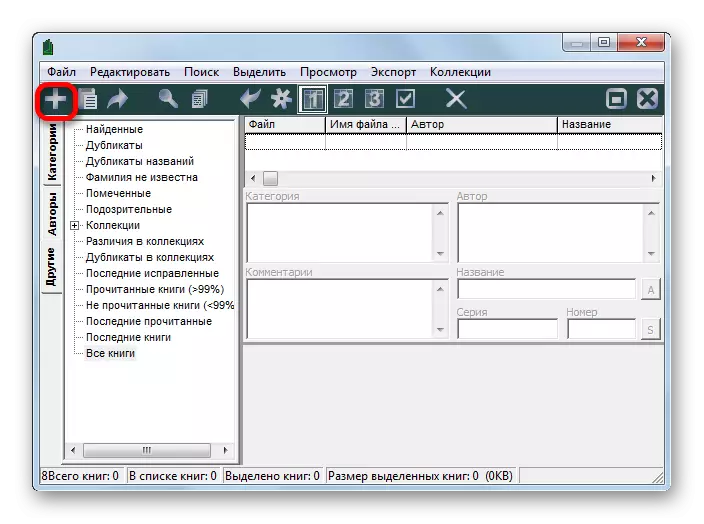

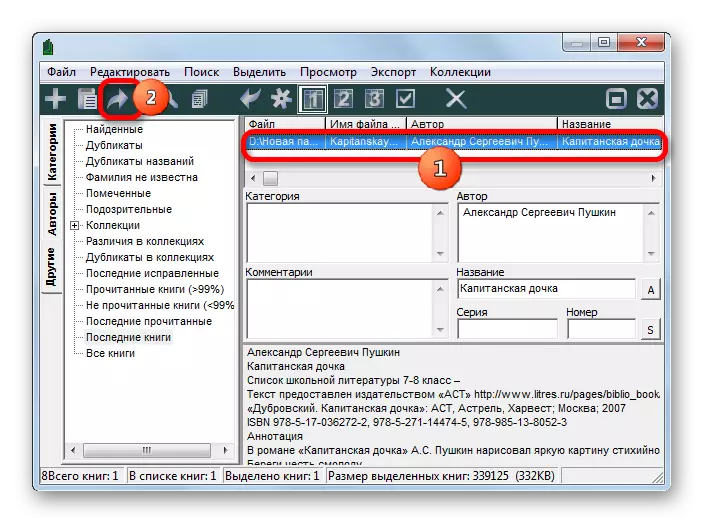

In general, as in most other readers, the contents of RTF in ICE Book Reader is displayed correctly, and the reading procedure is quite convenient. But the opening process looks more complicated than in previous cases, as it is necessary to import to the library. Therefore, most users who do not have their own library, prefer to use other viewers.
Method 8: Universal Viewer
Also, many universal viewers are able to work with RTF files. These are such programs that support the viewing of absolutely different groups of objects: video, audio, text, tables, images, etc. One of these applications is Universal Viewer.
- The easiest option to start the object in Universal Viewer is to drag the file from the conductor to the program window according to the principle that has already been revealed above when describing such manipulation with other programs.
- After dragging, the contents will be displayed in the Universal Viewer window.
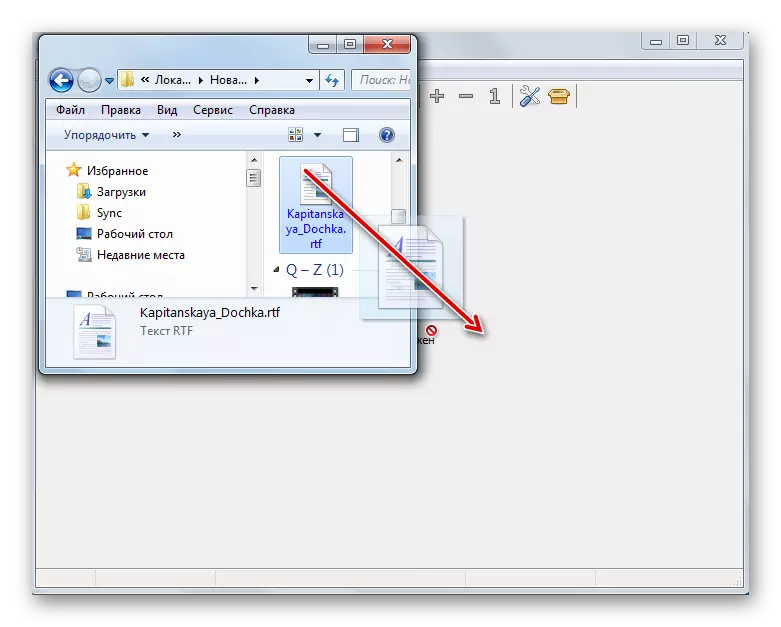
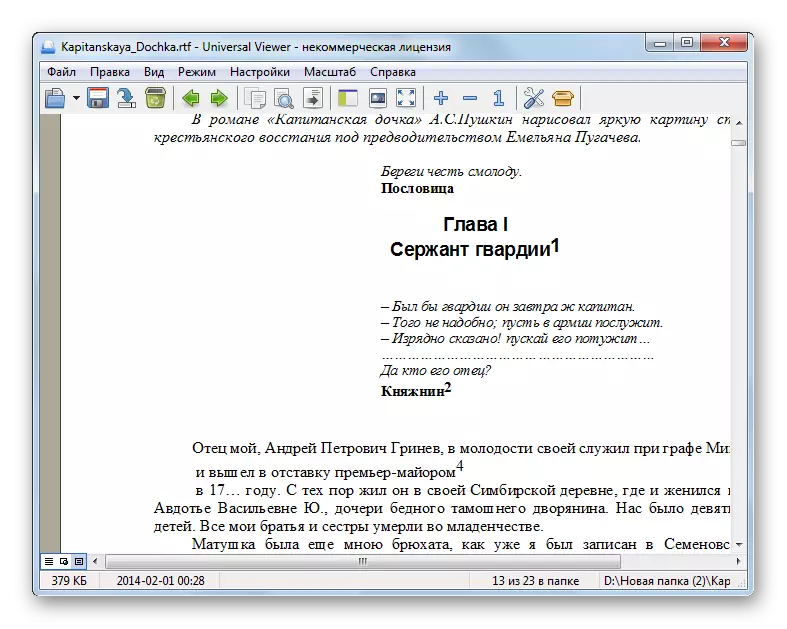
There is also another option.
- Running Universal Viewer, click on the "File" inscription in the menu. The list that will open, select "Open ...".
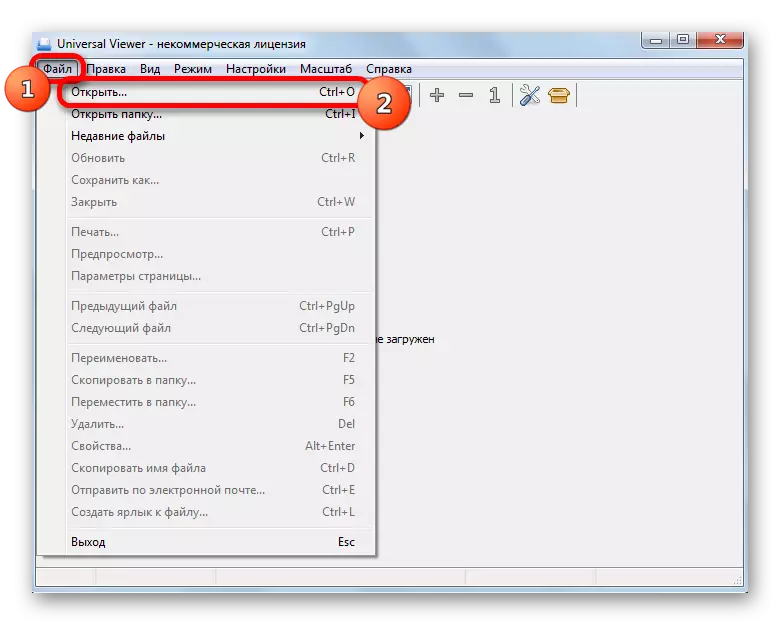
Instead, you can dial Ctrl + O or click on the "Open" icon as a folder on the toolbar.
- After starting the window, go to the object location directory, make it allocation and press "Open".
- The content will be displayed via the Universal Viewer interface.
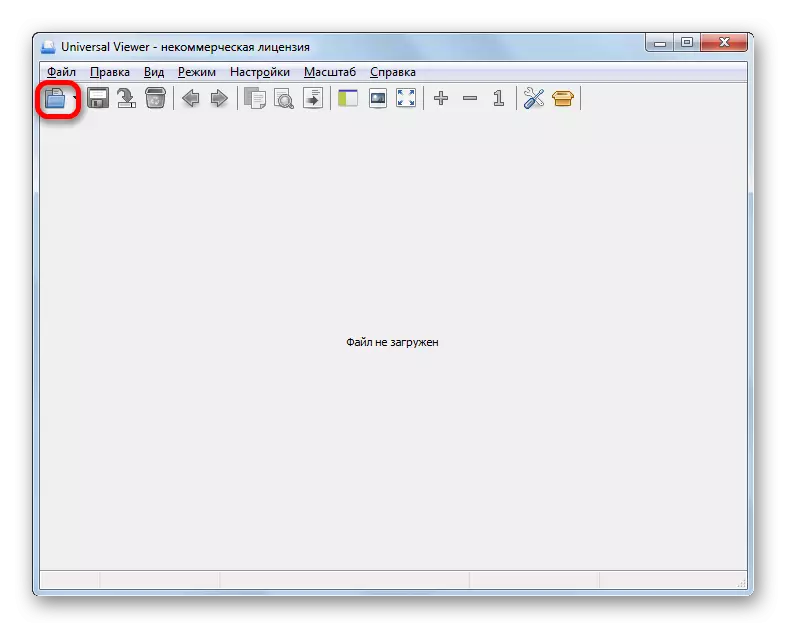
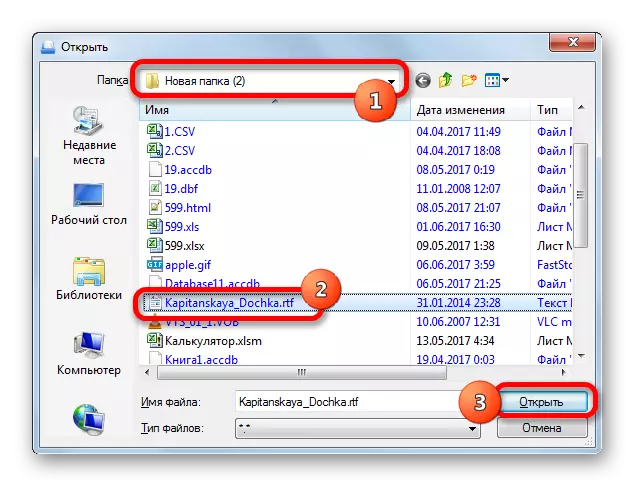
Universal Viewer displays the contents of RTF objects in style similar to the display style in text processors. Like most other universal programs, this application does not support all the standards of individual formats, which can lead to errors to display some characters. Therefore, Universal Viewer is recommended to use for general familiarization with the file content, and not to read the book.
We have acquainted you just with part of those programs that can work with RTF format. At the same time, they tried to select the most popular applications. The choice of concrete of them for practical use, first of all, depends on the user's goals.
So, if the object is required to edit, it is best to use text processors: Microsoft Word, LibreOffice Writer or OpenOffice Writer. Moreover, the first option is preferable. To read books, it is better to use the reader's program: CoolReader, AlReader, etc. If, in addition, you will keep your library, then Ice Book Reader is suitable. If you need to read or edit RTF, but you do not want to install additional software, then use the built-in Windows WordPad text editor. Finally, if you do not know, using the application to start the file of this format, you can use one of the universal viewers (for example, Universal Viewer). Although, having read this article, you already know what exactly open RTF.
